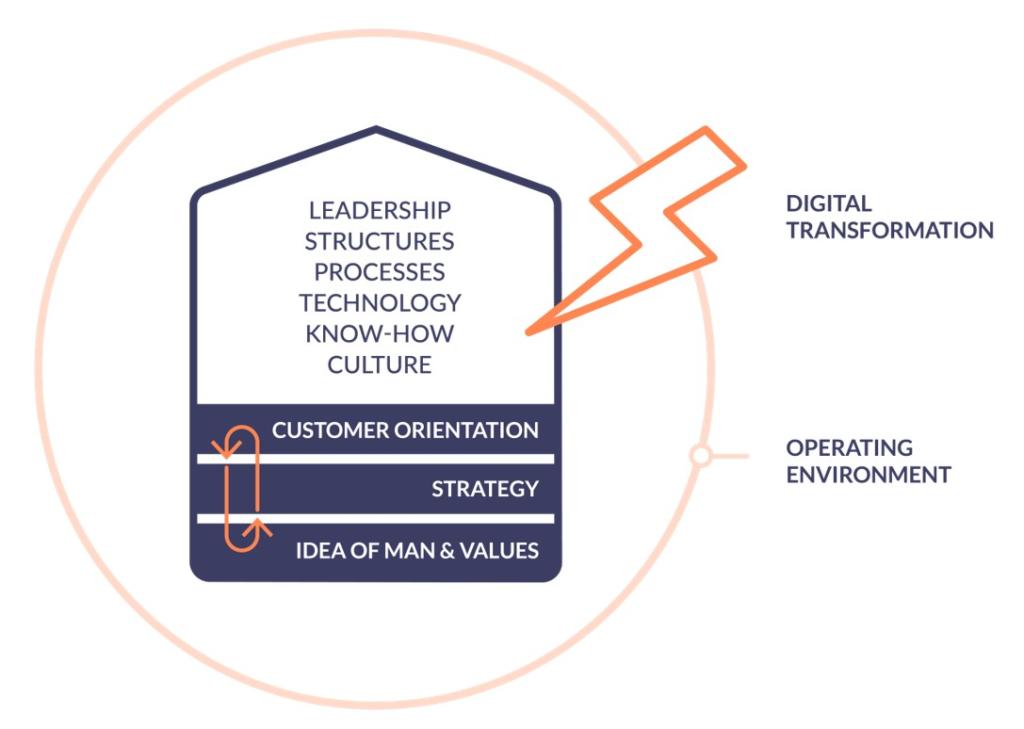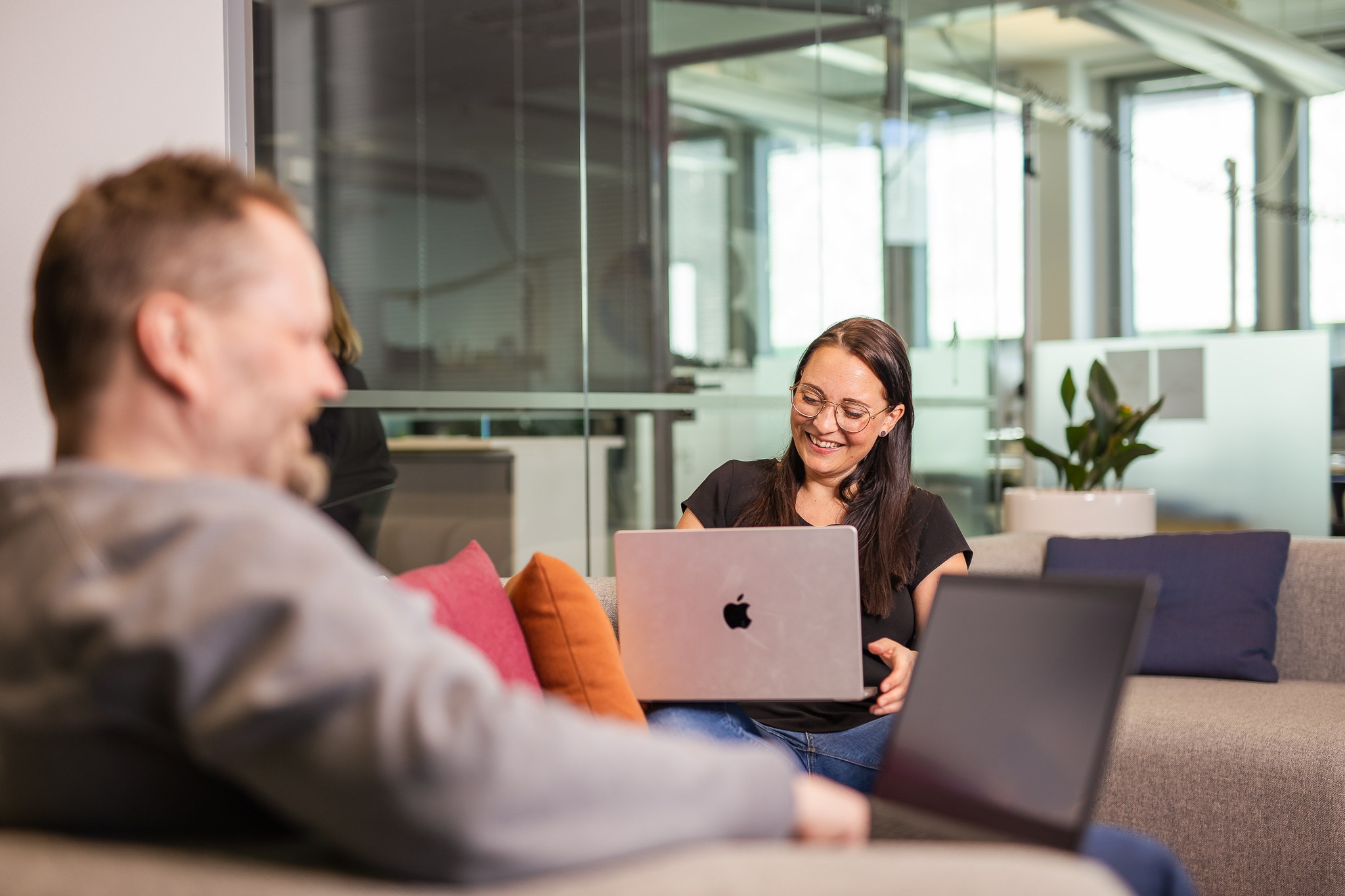The ongoing digital transformation is changing the operating logic and operating environment of organisations, as a result of which customer-orientation and the ability to offer a good customer experience are becoming increasingly vital success factors. This is undoubtedly one of the reasons why so many organisations have started to incorporate customer-orientation and providing a good customer experience into their stated values, in addition to making them strategic operational objectives.
The operations of an organisation are steered – or at least should be steered – by its strategy. The strategy, in turn, is shaped by both the organisation’s values and its view of human beings, i.e. how the organisation views its employees and customers. The importance of these two cornerstones should not be forgotten in our increasingly digital world, even as we start to reshape our operating methods. After all, an organisation’s values are the foundation on which its customer experience is built.
The systemic view – what does it mean?
Due to the systemic nature of organisations, all the parts that make up an organisation are intrinsically interconnected. What this means in practice is that every change caused by the digital transformation inevitably affects not only the management of an organisation, but also its structures, processes, expertise and recruitment needs as well as its work and organisational culture – and its customer experience.
While carrying out its own change process, an organisation must also make sure to maintain the excellence and constantly improving quality of its customer experience. However, in order to provide customer value in the present, constantly changing environment, more and more organisations must also be able to serve customers through digital channels. The ability to respond to this challenge can vary considerably between different organisations. Overcoming the situation may require some organisations to even undergo some rather painful procedures, while others may be able to navigate the changing tides with ease, hardly rocking the boat at all.
A good customer experience is not created in a vacuum…
Despite acknowledging the importance of customer-orientation, the development of many organisations seems to be characterised by an excessively inward-looking approach. That is to say, organisations will surprisingly often implement ongoing development measures as if they existed in a vacuum, which can lead an organisation to develop the operating models and processes considered vital to the customer experience based exclusively on information and needs arising from within the organisation itself.
This kind of approach is of course quite understandable, especially in sectors where competition over skilled employees is high, since in these sectors a positive employer image is a vital factor and condition for success. Even so, the customer should never be entirely forgotten, as focusing exclusively on internal development work can also lead to negative consequences in terms of the customer experience.
… Instead, a truly customer-oriented organisation is born though dialogue
Organisational design helps us develop an organisation in a comprehensive manner, so that all of its functions synchronously support not only the change taking place in different areas, but the customer experience provided by the organisation as well.
In addition, organisational design aims to prepare the organisation for the impacts that organisational changes may have. Such impacts can include the realignment of the organisation in relation to the market situation, operating environment, partners, competitors or customers, for example.
Comprehensive organisational design must always focus on also examining the world outside the organisation and the requirements that the outside world imposes on the organisation’s success. Furthermore, organisational design that strives for a good employee and customer experience requires focusing not only on operational (business) objectives, but on people as well. Ensuring a seamless and customer-oriented operation requires collecting information on the wishes, expectations, joys and woes that people experience when working in the organisation, as well as the wishes, expectations, joys and woes that people face when they interact with the organisation as customers and navigate its service environment.
Methods of organisational design
The methods of organisational design employed should always be selected based on the present change needs and situation. Here are some examples of the design tools that we utilise at Gofore:
- management consultation and sparring
- business design
- service design
- data analytics
- cultural consultation
Another tool that we consider important in regard to organisational design is research based on quantitative, qualitative and mixed methods, as well as the analysis of the results of said research. Research, along with co-creation and other participatory methods, is a vital part of organisational design work, providing us with information on human behaviour, which is crucial for development. Armed with this information, we can start working together with the organisation’s representatives on how best to approach past or ongoing changes within the organisation. At the same time, we can start preparing concrete plans on how and in what kind of timeframe we should promote development from the perspective of improving the customer experience.
Customer experience is always a subjective phenomenon, the quality of which can be influenced by means of organisation design. That is why it is worth asking whether it is possible to scale something so deeply rooted in individual experience. And if it is, how do we go about it? These questions will be answered in the next blog post, which will focus on the scaling of the customer experience.
[gap height=”40px”]
Interested in finding out more?
Just tell us how we can reach you, and we’ll get back to you.
[contact-form-7 id=”30143″ title=”Personal contact form, English” destination-email=”soile.roth@gofore.com” cc-email=”sales@gofore.com”]




